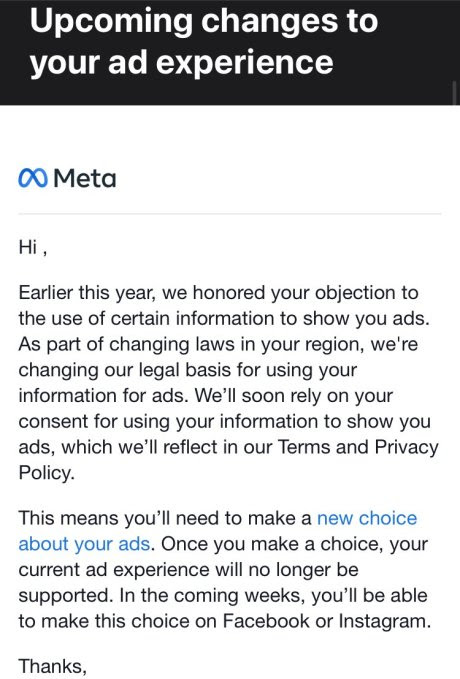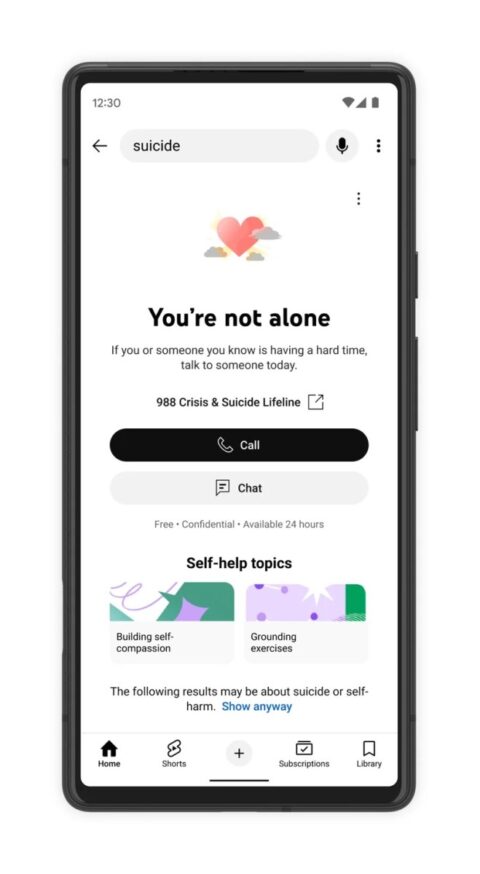Google’s AI-powered search experience is rolling out worldwide, after initial launches in select markets including the U.S., India, and Japan. Starting today, the AI-based conversational experience known as […]
‘How To Have Sex’ exposes the grim gender gap for virginity, sex, and the teen holiday experience
Molly Manning Walker’s film is a chilling revelation of how sexual pressures can manifest differently for men and women.

Content warning: This feature discusses sexual assault.
It was meant to be the “best holiday ever” but it ended up being a euphoric yet devastating life lesson.
Molly Manning Walker’s Cannes Film Festival breakout How To Have Sex takes audiences on a sizzling, searing journey to Malia, Crete, on a tumultuous girls trip. Three teenage best friends Tara (Mia McKenna-Bruce), Skye (Lara Peake), and Em (Enva Lewis) have finished their exams and are taking the Cretan town by storm in a blur of hedonism and newfound independence. But what ensues amongst the fish bowl cocktails and sticky nightclub anthems is a tussle with toxic friendships and the nuances of sexual assault and consent. At its core, the film weaves a dark but important tale of female sexuality and pressure.
How To Have Sex encourages post-watch conversations about problematic gender and sexual dynamics, particularly for young people. Walker’s film highlights the harsh contrast between the perceived experience of the “lads” and “girls” holidays, and how they are both portrayed in popular British culture. As a rite of passage, it is known as a trip taken by young women and men during school or college age – often a first solo trip abroad, even more often an excuse to blow off steam, party and experiment sexually.

Credit: Film4
When we watch films about “lads holidays” — think The Inbetweeners, American Pie, The Hangover, 22 Jump Street — they’re mostly lighthearted stories of young men on their quest to “get laid”, an experience, for better or worse, that’s often trivialised in comparison to the darker undertones of How To Have Sex and its female leads’ experiences.
The film is a chilling revelation of how sexual pressures can manifest differently for men and women — pop culture represents men having a laugh as they navigate their sexuality, while women are often put in danger. This portrayal is not an accident — it reflects the dark side of this journey for women. One in 16 U.S. women experienced forced or coerced intercourse as their first sexual experience in their early teens, according to a study, while a U.N. Women UK investigation found that 97 percent of women aged 18-24 have been sexually harassed.
How to Have Sex highlights the gender gap in terms of early sexual experiences

Credit: Film4
For sexologist and relationship therapist Madalaine Munro, this highlights a gender gap when it comes to inherent safety within early sexual experiences, and how it has become normalised. Clinical psychologist Dr. Sarah Bishop adds that the lighter portrayal of male sexual experiences “trivialises male sexual exploration, often without addressing the consequences or complexities involved.”
Walker’s research while making the film revealed surprising attitudes towards consent and sexual assault in younger generations. In an interview with Empire, she described “mind-blowing” pre-shoot workshops with teens during which some girls expressed views that veered towards victim blaming. When the production team asked their focus group to read a scene of sexual assault from the film, “they’d be like, ‘I don’t see any issues with this scene,'” Walker said, with one participant saying: “Girls have to wear better clothes. They have to protect themselves and not get drunk.” Victim blaming aside, it’s clear that young women are absorbing societal messages that the onus of preventing sexual assault falls to those most vulnerable.
Conversations need to be had about the dangerous consequences of victim blaming, particularly amongst women in female friendship groups.
The director described How To Have Sex as “the sort of film we need right now… one we’ve needed for a long, long time”. Conversations need to be had about the dangerous consequences of victim blaming, particularly amongst women in female friendship groups.
“When society teaches women to be competitive, dismissive, and weary of each other it adds to the lack of safety each woman inherently feels,” Munro explains. “It also creates a subtle narrative for women normalising mistreatment — that it is OK to be treated poorly by both men and women. This makes violence against women more dangerous because they feel isolated in it, and they can’t trust others for support while going through traumatic events.”
The film navigates the nuances of consent onscreen

Credit: Film4
The film also dives deep into the nuances of consent, as protagonist Mia (played to perfection by McKenna-Bruce) encounters multiple sexual assaults from a “lad” her friends meet and party with on the Malia strip, Paddy (Samuel Bottomley). She’s depicted saying “no” repeatedly, then “yes” in one instance, with clear negative and uncomfortable body language throughout all of the interactions, causing the viewer to think deeply about what consent truly is, and how it cannot be binary and must be continuous. More than that, consent can be withdrawn at any stage – and Tara’s experience onscreen brings attention to this often overlooked fact. Here, we see that “giving in” and saying “yes” after saying “no” repeatedly beforehand does not necessarily count as consent.
“We are witnessing a transition where consent wasn’t spoken about in the mainstream perhaps a decade ago, so as a society we are catching up with learning about consent,” Munro says. “For many, nuances in consent may be deeply misunderstood because we are living within an infrastructure which wasn’t built to recognise them.” She adds that “consent education at schools is so important, to help children and teenagers understand how to determine their own yes or no, and also how to process someone else’s no.”
“For many, nuances in consent may be deeply misunderstood because we are living within an infrastructure which wasn’t built to recognise them.”
The pressures around damaging trivialisation of “virginity” is also explored, with Tara’s friend Skye threatening to out her sexual inexperience in a game of Never Have I Ever. She tells Tara, “if you don’t get laid this holiday, you never will,” perfectly demonstrating the toxic competitive element of sexual discovery and experimentation, and how peer pressure influences and exacerbates it. It brings attention to how problematic “virginity” is as a concept – after all, it exists as a socially constructed idea within a patriarchal structure to devalue women, including Tara and her friends.
It encapsulates the onus that is applied to one’s first sexual experience, and the way this can warp our expectations to a dangerous degree. Bishop advises that discussions around virginity need to shift from judgement and shame to one that focuses on “personal choice and autonomy”, adding that stories onscreen should depict “a range of experiences and challenge stereotypes”, leading us to a more realistic and inclusive portrayal of virginity. This should help to dismantle harmful narratives, but before these conversations can shift, the negative nature of the status quo has to be highlighted.

Credit: Film4
In the aftermath of her sexual assault, we see Tara operate in silence, unable to put into words what happened to her. She speaks of how “strong” Paddy is, how he “knew what he was doing”, but the vocabulary of assault is never used. It’s a heartbreaking example of the need for better education around this subject, so that young people, whether they are victims or not, can express themselves about and call out this behaviour.
“From a psychological perspective, sex education is vital to help people develop the emotional and cognitive skills necessary for understanding consent, building healthy relationships, and reducing the stigma around the issues,” Bishop says, adding that a lack of education increases the likelihood of assaults occurring due to people being unaware of what constitutes sexual violence and abusive behaviour.
“For some women, this behaviour can be so normalised that they may not even realise that it is abuse until they see it on the screen.”
Munro adds that this silence and lack of communication after assault is part of a larger picture that involves lack of barriers to resources for victims – government research in January 2023 saw a reduction in conviction rates across domestic abuse (2.1 percent) and rape (7.2 percent). As well as pushing, campaigning and insisting on better sex education, instigating these important conversations through film, TV and other mediums is crucial.
“When consent and violence is portrayed on screen, it can give a voice to women who may not feel they have one. It may help them to understand the impact of what they have been through in a more accessible way,” Munro says.
“For some women, this behaviour can be so normalised that they may not even realise that it is abuse until they see it on the screen.”
How to Have Sex makes plain the importance of men holding other men responsible

Credit: Film4
Another huge vehicle for change when it comes to sexual assault and violence against women is exploring how men can help in preventing and challenging it – and How To Have Sex depicts this important issue perfectly. Alongside Paddy, we have the dubiously named Badger (played by Shaun Thomas), who forms his own friendship with Tara and clearly holds suspicions about potential sinister behaviour from his mate. But, significantly, he says nothing to try and stop it. He comforts Tara, sure, with weak comments about how long he’s known his friend — as if friendship duration negates the damage and his complicity.
Tackling this tricky dynamic, and the importance of men holding other men responsible for their actions, is one of the film’s biggest achievements.
“Engaging men and boys is very much part of the solution to ending male violence against women and girls,” Rebecca Hitchen, head of policy and campaigns at the End Violence Against Women Coalition tells Mashable. “Women consistently say they want men to call out unacceptable views and behaviour amongst their peer groups, and to be helpful bystanders. This means naming problematic behaviour when you see it, confronting your own ideas about masculinity and sometimes intervening in harassment and assault in safe ways.”
Munro insists that portraying the impact of men not holding other men accountable on screen is important, showing the impact of enabling and perpetuating abuse. “The standard of what is socially acceptable then changes, as we see with outdated perceptions of consent, abuse and violence,” she says.
Tackling this tricky dynamic, and the importance of men holding other men responsible for their actions, is one of the film’s biggest achievements.
One of Walker’s core missions with How To Have Sex was to shine a light on the “gap in education around consent” – she has done this and more, isolating shadowy corners of sexuality and holding them to the light. Munro calls films like this “pivotal for bringing conversations around consent and sexual pressures forward”.
“When we look at old romantic comedies, some of the behaviour normalises nonconsensual, harmful behaviour,” she says. “So films and stories that discuss consent and sexual challenges can help people to identify things that we relate to but may not have words for.”
Hitchen adds: “We’re still a long way from shifting public attitudes to sex, and it’s crucial that this is tackled not only through education and public campaigns, but in popular culture like films, TV shows, books, the media and beyond, which drives a crucial part of what we find acceptable and how we collectively think and behave.”
How To Have Sex, and films like it past and present, can stand strong alongside other campaign methods to change how we speak about sexuality and assault, and how they are navigated in the future.
How To Have Sex is now showing in cinemas.
If you have experienced sexual abuse, call the free, confidential National Sexual Assault hotline at 1-800-656-HOPE (4673), or access the 24-7 help online by visiting online.rainn.org.
‘How to Have Sex’ review: A brutally honest film about early sexual experiences
Molly Manning Walker’s directorial debut examines consent and sexual pressure, following three teens on an end-of-exams trip. Review.

Content warning: This review discusses sexual assault.
Despite its searchable title, How to Have Sex is by no means a tutorial.
It’s more of an intentionally vague concept that pervades Molly Manning Walker’s directorial debut, indicative of a more sinister knowledge gap affecting young people today when it comes to sexual experiences — thanks, inadequate sex education and rampant online misinformation!
One of the most important films of the year, How to Have Sex examines British youth culture, consent, and sexual pressure through three teens on their end-of-exams trip to Crete, Greece. Tacky pool parties, a bucketload of crappy booze, and formative experiences await, some thrilling, some deeply traumatic. With powerful performances from a talented, emotionally generous young cast, superb cinematography from Manning Walker, and a script that actually sounds like teen conversation, How to Have Sex is a triumph of honest storytelling.
It’s by no means an easy watch, nor should it be. But it’s reality.
What is How to Have Sex about?
When you’re finished exams at the end of high school and you’re faced with impending results, the possibilities of the future, and the newfound independence that comes with graduation, what do you do? You grab your two best friends and head to Greece, geared up for a week of too many shots, too many spews, too many trays of cheesy chips, and doing it all again night after night. You’re set to make hilarious, gorgeous memories with your mates, and meet some new faces. And it’s going to be the “best holiday ever”.
Until it’s not.
This is the set-up for Manning Walker’s film, which sees 16-year-old Tara (Mia McKenna-Bruce), Em (Enva Lewis), and Skye (Lara Peake) heading to a week of partying in the coastal town of Malia for the British equivalent of America’s Spring Break or Australia’s Schoolies. The horizon is clear: drinking, dancing, and sex. For Tara, she’s yet to have her first sexual experience and she’s feeling under pressure to “catch up” with her friends. When Tara meets the neighbours, their week of partying intensifies and the pressure rises. However, for Tara, her first sexual experiences aren’t respectful, wanted, or consensual, and the film follows her during the week processing what’s happened as the party rages on.
How to Have Sex navigates consent and assault with respect and honesty
How to Have Sex isn’t the first teen film to examine these experiences of sexual assault and consent by any means, but Manning Walker brings a brutal honesty and frankness that sets the film apart. Through superb scripting and performances, the film acknowledges how male violence is normalised or brushed aside, how that “nightmare of a guy” in a social circle known for misconduct is simply allowed to carry on because “I’ve known him since we were little.” And in particular, the film puts emphasis on peer pressure to say nothing — and how blatantly society puts this responsibility on survivors.
You should have said something. These conversations aren’t plucked from obscurity, I’ve heard them myself. You might have heard them.
“You should have said something,” Tara is told. You should have said something. These conversations aren’t plucked from obscurity, I’ve heard them myself. You might have heard them. Manning Walker told the BFI that the idea for the film itself came from a similar trip in her own adolescence, but particularly from speaking to a group of friends years later about their collective experiences, and recognising yeah, that wasn’t OK. The film shows how casually teens can feel pressured into unwanted sexual experiences, even celebrated for doing so. And it’s this level of authenticity in the script that imbues How to Have Sex with uncomfortable accuracy, reminding us that not every teen sexual experience is as wacky as other films and TV shows present them.
Not everyone will feel this way. When I saw the film at the BFI, I was shocked to sit behind two people on the bus who loudly debated the incredulity of Tara’s circumstances, that her friends would never act as they do, that this kind of assault would never happen, and that Tara’s eventual courage to speak up about her experience felt removed from reality. I cannot disagree with these opinions more (and I tried my best to not scream these in public, I’ll tell you what). Toxic friendships that hasten sexual experiences and leave people in vulnerable scenarios exist. Everyday social circumstances that enable predatory behaviour exist.
Survivors of sexual assault do not always have the words to describe what has happened, nor should others blame them for processing it at their own pace. It’s a shocking reality that many who experience sexual assault may not feel able to label it as such, and misguided perceptions of rape keep this confusion in a deeply dangerous ‘grey area’.
“The way our culture talks about and defines rape can have significant impact on a person’s ability to recognise when it has happened to them,” Mashable’s Rachel Thompson writes in her book Rough. “The stigma attached to rape and cultural ideas about the consequences of accusing someone of sexual violence also present obstacles in acknowledging the reality of a violation.”
Toxic friendships that hasten sexual experiences and leave people in vulnerable scenarios exist. Everyday social circumstances that enable predatory behaviour exist.
Thompson points to shocking figures from the End Violence Against Women coalition, writing: “33 percent of people in Britain think it isn’t rape if a woman is pressure into having sex but there’s no physical violence. And one in ten people are ‘unsure or think it’s usually not rape to have sex with a woman who is asleep or too drunk to consent.'”
It’s this data and this reality that trickles into casual conversations and sexual experiences in How to Have Sex, how the characters talk about and pursue sex without speaking to consent or feelings of pressure in vulnerable circumstances.
How to Have Sex features an impeccable young cast
As the film’s protagonist, McKenna-Bruce takes Tara through a deeply compelling and devastating arc, beginning as a joyful, hilarious girl, the absolute life of the party, and finding herself crushed by her experiences of alienation, peer pressure, and ultimately, surviving assault. Through lengthy close ups that muddle the surrounding sounds, Manning Walker allows McKenna Bruce to move Tara through a mix of emotion — shock, shame, anger, disappointment, fear, suppressed vulnerability — as the party rages on around her. As much as she tries to plunge herself into every dance floor and pool party, Tara appears disconnected from everything: her social group, the ludicrous sexual stunts that define the Malia parties, and especially her own body.
Meanwhile, Tara’s two best friends prove polar opposites, with Peake perfecting peer pressure queen Skye and Lewis bringing sweet, hilarious nuance to Em, who actually recognises something is wrong with her friend. Both Skye and Em fail to adequately handle Tara’s experience, both painfully championing her in their own way instead of checking in properly with her. But what Manning Walker does with the core three is distill an absolute lack of knowledge each of them has about sex, consent, and pressure. They literally do not have the language to talk about their experiences beyond verbal high-fives, and because of this, Tara’s pain goes unacknowledged by her friends until the very last moments.
The film proves the best part of any party is before it’s started
If there’s a dominant truth in How to Have Sex it’s that the best part of the party is in the promise of it all. When Tara, Skye, and Em arrive in Malia, they’re giggling, bickering, screaming, and splashing about in the freezing ocean, on top of the world. They’re enamoured with their tiny hotel room, praising “the best view I’ve ever seen in my life”.
Though Manning Walker knows how to shoot the hell out of a party scene, it’s these early moments that I clung to for the rest of the film, the trio embracing their independence with hands in the air, deep-and-meaningfuls in the street while stuffing their faces with chips, and stocking up on supplies in the supermarket with their hard-saved cash. It’s pure, adolescent bliss, on the cusp of adulthood, and it’s truly fun to watch the chemistry of the core cast, imbuing Tara, Em, and Skye with sheer resilience, taking another shot right after a cheeky spew. They’re ridiculous, silly, and hilarious, and completely avoiding thinking about the future.
It’s this joy and silliness they deserve, but the formative experiences ahead of them will determine the rest of their lives. When the credits rolled of How to Have Sex in my screening, the cinema filled with the enormous, emotive sounds of “Strong” by Fred again… and Romy. I couldn’t move. It was perfect. “You don’t have to be so strong,” Romy sings. And she’s right. But we are.
If you have experienced sexual abuse, call the free, confidential National Sexual Assault hotline at 1-800-656-HOPE (4673), or access the 24-7 help online by visiting online.rainn.org.
Meta’s latest privacy rip-off will test the EU’s mettle for reining in Big Tech
This week Europe was treated to another show of the mutability of tech after Meta, the microtargeting ad empire formerly known as Facebook, announced it would be launching […]
‘All Dirt Roads Taste of Salt’ review: Raven Jackson’s feature-length debut is a beautiful, languid coming-of-age story
Writer/director Raven Jackson’s feature-length debut, “All Dirt Roads Taste of Salt,” tells the story of a young woman growing up in Mississippi. Review.

If I had to describe All Dirt Roads Taste of Salt in one word, it would be “lingering.”
The feature-length debut from filmmaker and poet Raven Jackson takes its time in all things. It fixates on quiet moments, sometimes for minutes on end. It pokes at the ways in which memories can surface long after we’ve experienced them. Finally, it stays in the mind long after you’ve seen it, even if you struggle with its languid pacing.
What is All Dirt Roads Taste of Salt about?

Credit: A24
All Dirt Roads Taste of Salt transports us to Mississippi in the 1970s and 1980s, where a young Black woman named Mackenzie — Mack for short — comes of age. Four actors play Mack across the span of her life: Mylee Shannon is Mack as a toddler, Kaylee Nicole Johnson is adolescent Mack, Charleen McClure is Mack from her late teens to her thirties, and Zainab Jah is a somewhat older Mack. The film weaves between these four life stages but mostly focuses on those embodied by Johnson and McClure.
Mack’s life unfurls before us in a series of nonlinear vignettes. She goes fishing with her father, Isaiah (Chris Chalk), and observes her mother, Evelyn (Sheila Atim), as she applies lipstick. She finds first love, only to lose it. She endures grief, becomes a mother herself, and remains steadfastly connected to her family. Her story is almost entirely devoid of dialogue — instead, Jackson finds meaning in silence and sensory experiences.
All Dirt Roads Taste of Salt is a deeply sensory film.

Credit: A24
With such an evocative title, it’s no surprise that All Dirt Roads Taste of Salt immerses itself in the senses. Lush soundscapes of chirping insects and falling rain envelop you in the muggy heat of Mississippi. The film’s very first image is an extended shot of young Mack running a finger over a fresh-caught fish, taking in every ridge of its scales. Not long after, she’ll dip her hands in the river mud and squeeze until it drips through her fingers.
Based on these opening scenes alone, you can tell that All Dirt Roads Taste of Salt is a film of textures. Jackson and cinematographer Jomo Fray are fascinated by how characters tangibly interact with their environment, focusing on bare feet treading over grass and hands digging through dirt. To watch these scenes is to feel the ghost of mud and grass on your own skin, to feel more aware of your own body in space overall.
‘Poor Things’ review: Emma Stone and Mark Ruffalo deliver a horny-as-hell spin on ‘Frankenstein’
The environment surrounding Mack is not just a place, but a deep-rooted part of her family’s lives and culture. As Mack’s Grandma Betty (Jannie Hampton) tells Mack and her sister, Josie (Moses Ingram), they’re all made of dirt and water. Repeated shots of rivers and rain, of mud and dry clay emphasize this granule of wisdom passed from generation to generation.
These all crystallize in the film’s exploration of the practice of geophagia, or eating earth. Geophagia is an old tradition, one that came to the United States from Africa through the transatlantic slave trade. The practice continues today, primarily in the south, and in All Dirt Roads Taste of Salt, we see that it is especially meaningful to Mack and other Black women in her family. When she or other characters eat clay dirt, it feels like a way to connect to those who came before, be they mothers, grandmothers, or ancestors even further back in the family line.
All Dirt Roads Taste of Salt is an unconventional meditation on memory.

Credit: A24
Jackson’s focus on memory and family connections is supported by the film’s hazy, dreamlike quality. The narrative flits from scene to scene, sometimes crossing decades in the process. Yet even if these moments take place years apart, Jackson manages to find the strange and beautiful ways in which they’re related. In one scene, a pregnant Mack lies in her bathtub — in the next, we see Evelyn bathing Mack as a toddler in the very same tub. There’s a circularity to it all, as if Jackson is eschewing linear time itself.
This slower, circular pacing allows for some thematically resonant parallels between stages in Mack’s life, but it can also prove challenging — even frustrating, at times. Beyond one scene where an older Mack (Jah) reflects by the river, there are few anchor points in the present that offer context for the memories Mack is processing. There is little sense of build-up in this film, only of events simply happening and then moving on. This is not to say these events happen in a vacuum: Mack’s memories are always in conversation with themselves. However, these conversations don’t necessarily have much to say. They simply exist.
All Dirt Roads Taste of Salt also struggles with its relationship to silence. Scenes that start out naturally quiet, like a melancholy parting hug between Mack and her ex-boyfriend, Wood (Reginald Helms Jr.), stretch on to the point of strangeness, bogged down by a continued silence that doesn’t always feel earned. In the aforementioned scene, the hug itself lasts for around five minutes, its original intimacy slowly devolving into grating repetition. When the film’s dialogue does come, it is both naturalistic and deeply evocative, even more than the lengthy silences that take up most of the film. If only the characters had more chances to really dig into a spoken scene.
While Jackson’s experimentation with narrative structure and rhythm sometimes falters, the overall beauty and deeply felt emotion of All Dirt Roads Taste of Salt are undeniable. With her feature-length debut, Jackson has crafted a sensitive coming-of-age film, one that doubles as a hyper-specific portrait of the woods and fields and rivers that shaped Mack and her whole family. After all, the truest scenes here are always those shared between humans and nature: Mack and her father fishing in a muddy riverbed, Mack and her daughter letting rainwater trickle down their arms, Mack’s grandmother telling Mack and Josie about clay dirt eating. In these moments, Jackson and the film’s magic truly come together, making for a perfect storm of memory, family, and the places that shape us.
All Dirt Roads Taste of Salt opens in theaters Nov. 3.
UPDATE: Oct. 31, 2023, 1:40 p.m. EDT All Dirt Roads Taste of Salt was reviewed out of the New York Film Festival; the movie opens in theaters Nov. 3.
Future Apple Watch updates might include sleep apnea, diabetes, and blood pressure sensors
Apple Watches might get another health upgrade in 2024, with new detection sensors for common conditions.

The ever-evolving Apple Watch is rumored to be getting even more health monitoring features in 2024, with reports that the devices will expand to three additional sensors that can warn users if they are prediabetic, sense rising blood pressure, and alert someone if they may have sleep apnea.
The portable devices, Apple’s tentpole health and fitness offering, have undergone similar health-centered upgrades in recent years, including the addition of fertility tracking tools and a body temperature sensor in 2022. Earlier this year, the company was rumored to be working on an AI-powered health coach capable of designing custom health plans based on biometric and behavioral data gathered by the watch — an indication that Apple is looking to further its reach in the billion-dollar healthcare industry.
Rumored reports of Apple’s next health sensor offerings suggest future watch expansion will continue operating as non-treatment, non-diagnostic tools, with the potential for future expansion into post-diagnosis care.
The device’s rumored blood glucose monitoring system will warn Apple Watch users if they are prediabetic using a noninvasive light shined through the skin that measures blood glucose levels. The device won’t offer actual blood sugar readings to users already diagnosed with diabetes.
The blood pressure sensor will be able to detect when a wearer’s blood pressure is elevated, accompanied by a “blood pressure journal” (similar to Apple’s other personal tracking offerings) to help track external factors leading to hypertension. It won’t be able to show a user their exact systolic and diastolic measurements for treatment purposes.
A new sleep apnea sensor will measure breathing patterns during sleep to estimate if a user has the condition, as well as suggestions when they should see a physician, building on the watches current sleep tracking tools.
The new Apple Watch features may debut alongside the launch of the (rumored) subscription-based and AI-powered health service, according to an exclusive Bloomberg report on the company’s healthcare plans. But Apple’s larger goal to “revolutionize healthcare” is still a future ambition, according to insiders. The new features, not yet confirmed by Apple, are reportedly still in development under Apple’s Exploratory Design Group. “What we’re not interested in is post-sick health care,” a person involved in the project told Bloomberg, a suggestion that the company is worried about regulatory complications and the possibility of misdiagnosis.
Apple’s foray into healthcare is part of a wider company strategy to move users away from single-use device ecosystems and towards a one-stop shop model of health technology, but previous expansions of the Apple Watch have prompted multi-factored concern, including the fear of data bias and possible privacy issues.
Meanwhile, high healthcare costs and treatment inaccessibility have pushed many to seek more affordable options for monitoring their health and accessing physician care. Apple hopes its products, and limited-use health tools like those rumored to release next year, help bridge the gap.
YouTube’s new teen safeguards limit repeated viewing of some video topics and more
Two years after testifying before the U.S. Senate over child safety concerns, including teens’ exposure to eating disorder content, YouTube today announced additional product safeguards around its content […]
YouTube puts limits on repetitive recommendations for teens
YouTube tries to address teen safety and well-being with the new limits.

In a move designed to prevent teenagers from repetitively watching potentially harmful videos on YouTube, the streaming platform announced Thursday that it will limit repeated recommendations of videos featuring certain themes to U.S. teens.
Currently, YouTube is limiting repetitive exposure to videos that compare physical features and favor some types over others, idealize specific fitness levels or body weights, or depict social aggression in the form of non-contact fights and intimidation. While these videos don’t violate the platform’s policies, repeated viewings could be harmful to some youth. YouTube already prohibits videos of fights between minors.
James Beser, director of product management for YouTube Kids and Youth, announced the new policy in a blog post Thursday.
Beser said that the company’s youth and family advisory committee, which comprises independent experts in child development and digital learning and media, helped YouTube identify categories of content that “may be innocuous as a single video, but could be problematic for some teens if viewed in repetition.”
He noted that teens are more likely to develop negative ideas about themselves when consuming online media that focuses on “ideal standards.”
Allison Briscoe-Smith, a child psychologist and member of the committee, said in the blog post that such content can “emphasize potentially problematic messages,” which can in turn affect how teens see themselves. Limited repeated recommendations will go into effect in other countries in the next year, according to the post.
The new policy comes amidst heavy scrutiny and criticism of the way social media platforms can influence youth mental health and well-being.
In May, the U.S. Surgeon General issued an advisory warning about youth social media use involving a “profound risk of harm.” In September, The Mental Health Coalition convened a group of experts to begin creating a “first ever” rating system across social media, search engines, and gaming platforms.
Beser’s announcement on Thursday also included updates to existing youth well-being features.
“Take a Break” and “Bedtime” reminders, which have been in place since 2018, will now appear as a full-screen takeover and will surface more frequently, especially for viewers younger than 18. These reminders are turned on by default for youth accounts.
YouTube’s crisis resource panels will also now appear in full-screen mode, which YouTube hopes will encourage viewers to pause and explore a panel’s topics when searching the platform for information related to suicide, self-harm, and eating disorders.
Beser framed the new policy and updates as part of a comprehensive effort to “build great experiences” for young users.
“We recognize the important role that YouTube can play in the life of teens and are deeply committed to ensuring time on YouTube is time well spent,” Beser wrote.







